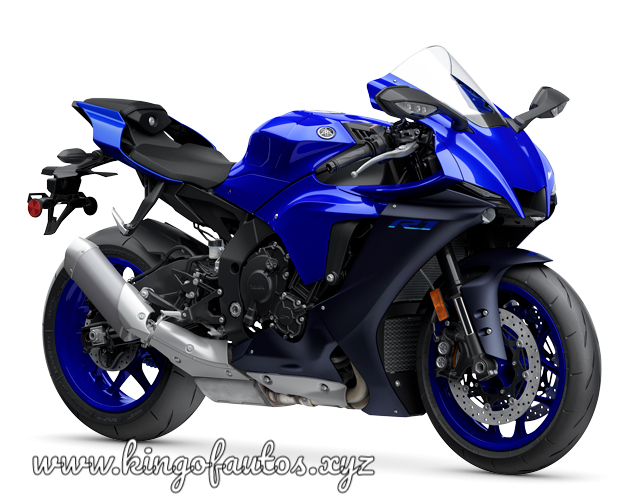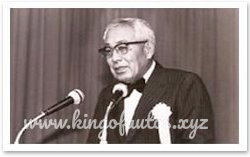History of Yamaha Motor Corporation
“I need to do preliminary production of bike motors.” It was from these words verbally expressed by Genichi Kawakami (Yamaha Motor’s most memorable president) in 1953, that the present Yamaha Motor Company was conceived.
“Assuming you will follow through with something, be awesome.”
Genichi Kawakami.
Genichi Kawakami was the primary child of Kaichi Kawakami, the third-age leader of Nippon Gakki (instruments and hardware; by and by Yamaha Corporation). Genichi contemplated and moved on from Takachiho Higher Commercial School in March of 1934. In July of 1937, he was the second Kawakami to join the Nippon Gakki Company. He immediately rose to places of administrator of the organization’s Tenryu Factory Company (instruments) and afterward Senior General Manager, prior to taking on the place of fourth-age President in 1950 early on of 38.
In 1953, Genichi was searching for a method for utilizing inactive machining hardware that had recently been utilized to make airplane propellers. Thinking back on the establishing of Yamaha Motor Company, Genichi had this to say “While the organization was performing great and had some monetary breathing space, I wanted to search for our next area of business. In this way, I did some exploration.” He investigated creating numerous items, including sewing machines, car parts, bikes, three-wheeled utility vehicles, and cruisers. Market and cutthroat elements drove him to zero in on the bike market. Genichi really visited the United States commonly during this period.
At the point when gotten some information about this choice, he said, “I had my examination division boss and different supervisors visit driving bike plants around the country. They returned and let me know there was still a lot of chance, regardless of whether we were entering the market late. I would have rather not been totally ill-equipped in this new business so we visited to German manufacturing plants prior to embarking to fabricate our most memorable 125cc bicycle. I participated in this visit around Europe during which my central specialists figured out how to construct motorbikes. We did however much examination as could reasonably be expected to guarantee that we could fabricate a bicycle comparable to any out there. When we had that certainty, we began going.”
“On the off chance that you will make it, make it the absolute best there is.” With these words as their adage, the advancement group emptied every one of their energies into building the primary model, and after ten months in August of 1954 the principal model was finished. It was the Yamaha YA-1. The bicycle was fueled by an air-cooled, 2-stroke, single chamber 125cc motor. Once got done, it was put through an uncommon 10,000 km perseverance test to guarantee that its quality was top-class. This was bound to be the main crystallization of what has now turned into a long practice of Yamaha inventiveness and an endless soul of challenge.
Then, at that point, in January of 1955 the Hamakita Factory of Nippon Gakki was assembled and creation started on the YA-1. With trust in the new bearing that Genichi was taking, Yamaha Motor Co. Ltd. was established on July 1, 1955. Staffed by 274 excited workers, the new bike maker worked around 200 units each month.
That very year, Yamaha entered its new YA-1 in the two greatest race occasions in Japan. They were the third Mt. Fuji Ascent Race and the first Asama Highlands Race. In these presentation races Yamaha won the 125cc class and the next year the YA-1 won again in both the Light and Ultra-light classes of the Asama Highlands Race.
By 1956, a subsequent model was prepared for creation. This was the YC1, a 175cc single chamber two-stroke. In 1957 Yamaha started creation of its most memorable 250cc, two-stroke twin, the YD1.
“In the event that you will make it, make it the absolute best there is.” With these words as their saying, the advancement group emptied every one of their energies into building the main model, and after ten months in August of 1954 the primary model was finished. It was the Yamaha YA-1. The bicycle was controlled by an air-cooled, 2-stroke, single chamber 125cc motor. Once got done, it was put through a phenomenal 10,000 km perseverance test to guarantee that its quality was top-class. This was bound to be the principal crystallization of what has now turned into a long practice of Yamaha innovativeness and an unlimited soul of challenge.
The primary Yamaha to contend in America(1957)
Yamaha made a speedy move utilizing the energy acquired in the USA and started promoting their bikes through a free merchant in California. In 1958, Cooper Motors started selling the YD-1 250 and the MF-1 (50cc, two-stroke, single chamber, step through road bicycle). Then in 1960, Yamaha International Corporation started selling bikes in the USA through vendors.





